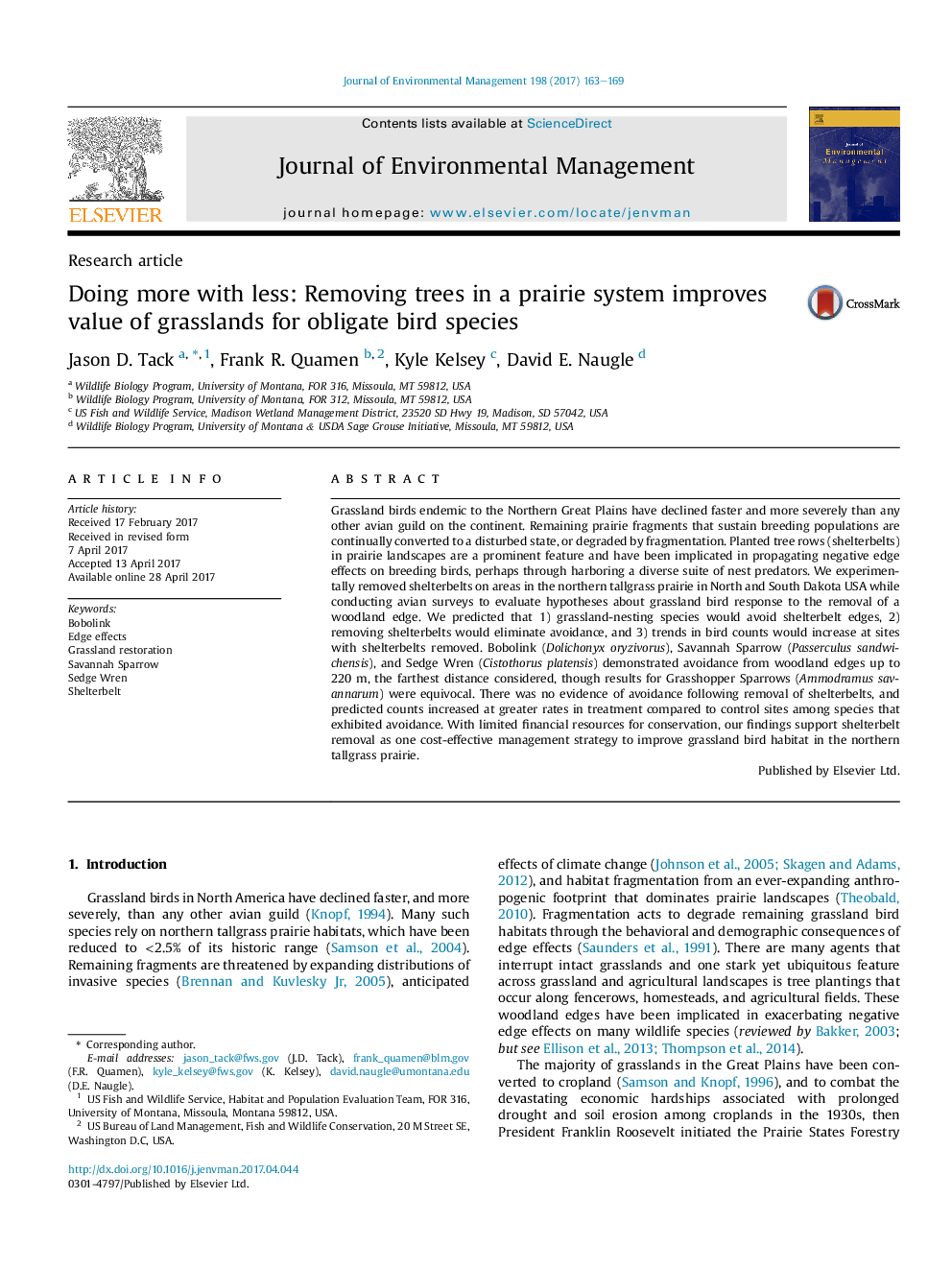| Article ID | Journal | Published Year | Pages | File Type |
|---|---|---|---|---|
| 5116740 | Journal of Environmental Management | 2017 | 7 Pages |
â¢Bobolinks, Savannah Sparrows, and Sedge Wrens avoid planted shelterbelts.â¢Removing shelterbelts removed avoidance exhibited among species within one season.â¢Grassland bird counts increased at greater rates at sites with shelterbelts removed.â¢Removing shelterbelts is an efficient way to restore areas for grassland songbirds.
Grassland birds endemic to the Northern Great Plains have declined faster and more severely than any other avian guild on the continent. Remaining prairie fragments that sustain breeding populations are continually converted to a disturbed state, or degraded by fragmentation. Planted tree rows (shelterbelts) in prairie landscapes are a prominent feature and have been implicated in propagating negative edge effects on breeding birds, perhaps through harboring a diverse suite of nest predators. We experimentally removed shelterbelts on areas in the northern tallgrass prairie in North and South Dakota USA while conducting avian surveys to evaluate hypotheses about grassland bird response to the removal of a woodland edge. We predicted that 1) grassland-nesting species would avoid shelterbelt edges, 2) removing shelterbelts would eliminate avoidance, and 3) trends in bird counts would increase at sites with shelterbelts removed. Bobolink (Dolichonyx oryzivorus), Savannah Sparrow (Passerculus sandwichensis), and Sedge Wren (Cistothorus platensis) demonstrated avoidance from woodland edges up to 220Â m, the farthest distance considered, though results for Grasshopper Sparrows (Ammodramus savannarum) were equivocal. There was no evidence of avoidance following removal of shelterbelts, and predicted counts increased at greater rates in treatment compared to control sites among species that exhibited avoidance. With limited financial resources for conservation, our findings support shelterbelt removal as one cost-effective management strategy to improve grassland bird habitat in the northern tallgrass prairie.
